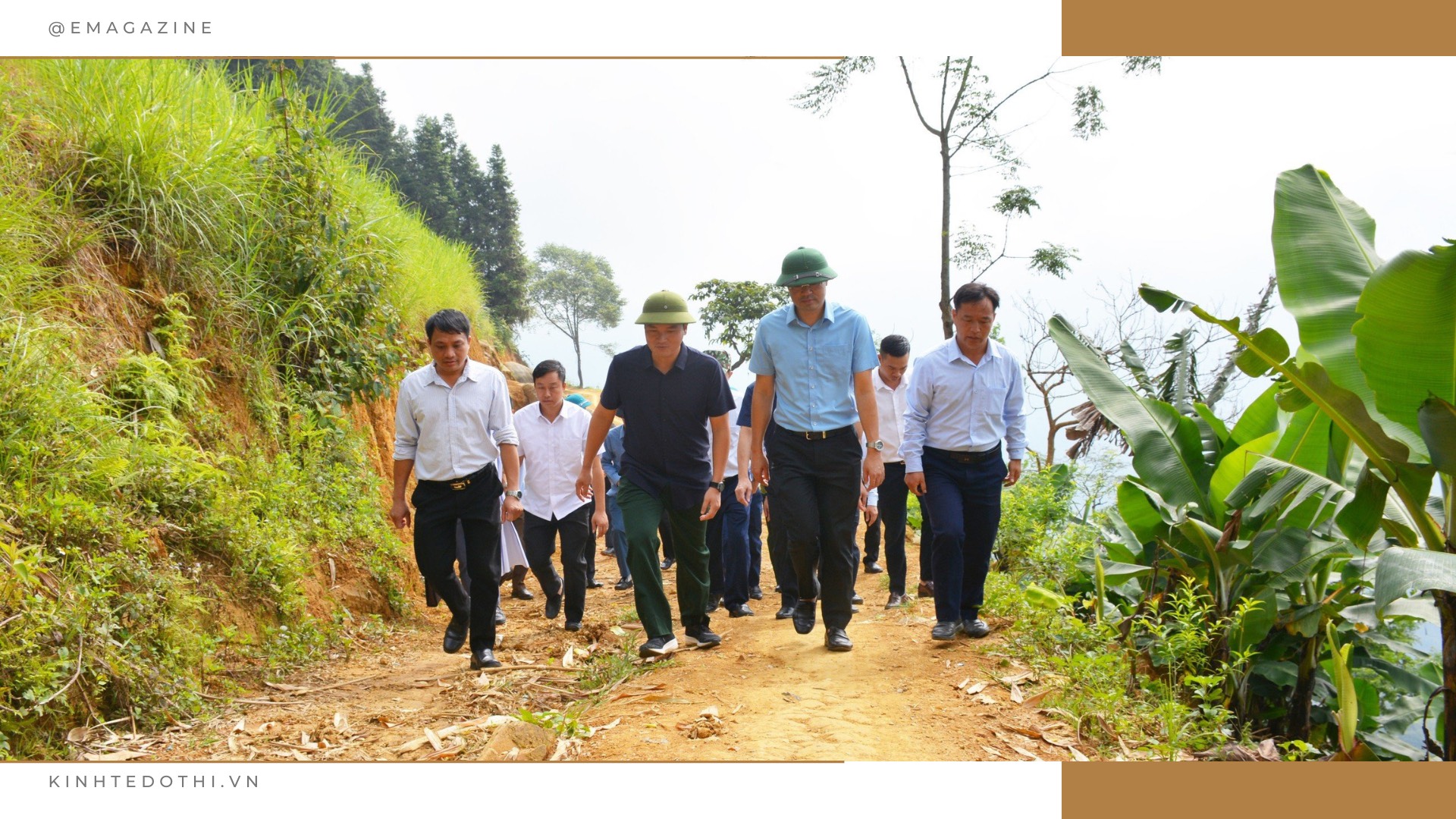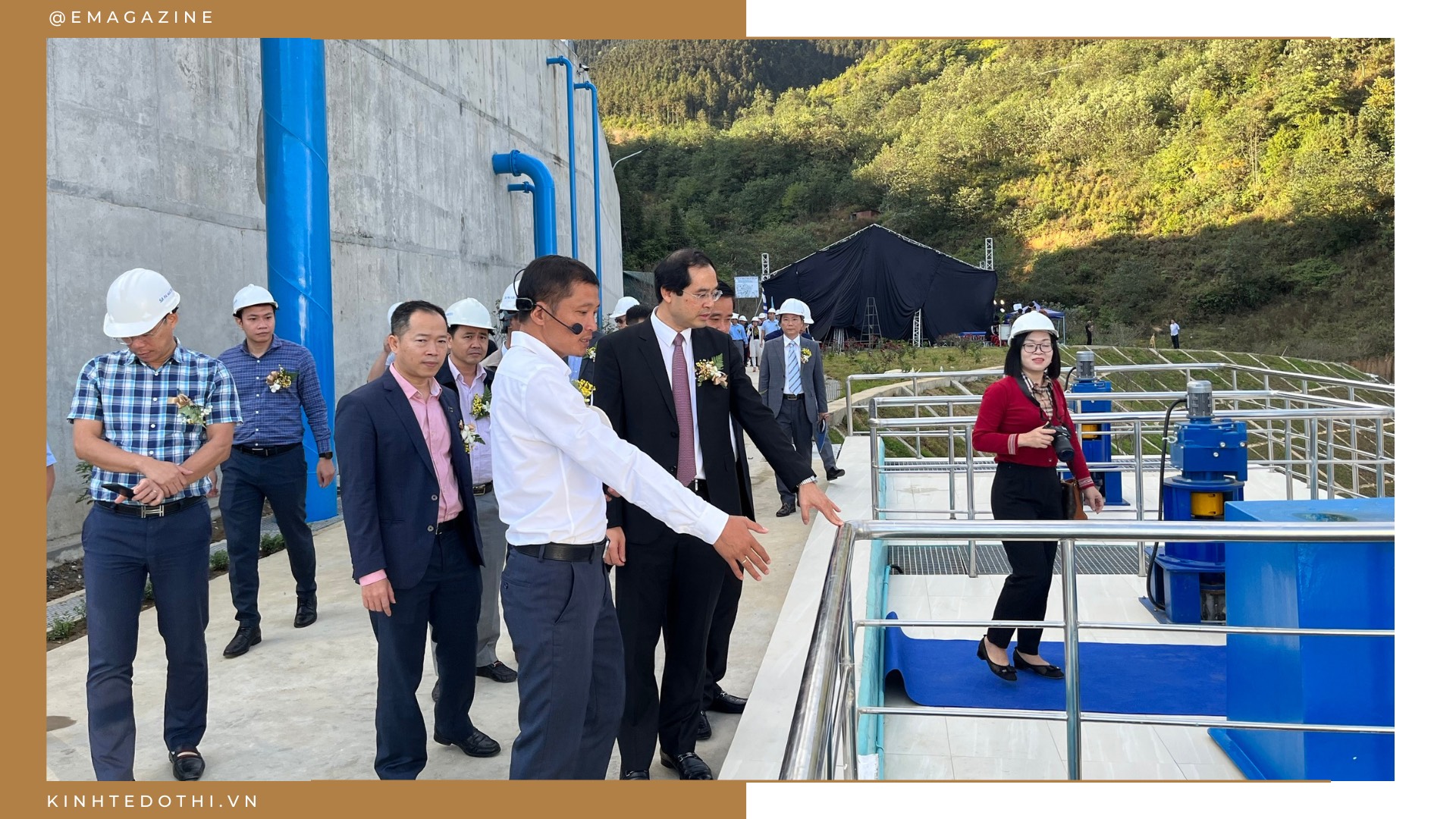Lao Cai eyes greater role as trade hub bridging Vietnam, ASEAN and China
Lao Cai has been on a steady path of economic development, achieving a GRDP growth rate of 6.62% in the first six months of the year. Chairman of the Provincial Committee Trinh Xuan Truong told The Hanoi Times about the province's determination to become Vietnam's trading hub, bridging the country with ASEAN and China's southwest region.
| Chairman of Lao Cai Province People’s Committee Trinh Xuan Truong. |
What steps has Lao Cai taken, and what major achievements have been made since the Politburo's Resolution No. 11-NQ/TW set the goal of making the province an economic trade hub between Vietnam, ASEAN, and Southwest China?
Politburo's Resolution No. 11-NQ/TW, dated February 10, 2022, identified Lao Cai as an important trade corridor between Vietnam, ASEAN, and Southwest China.
To realize this, Lao Cai has drawn up an action plan with 18 projects, 24 objectives, 7 key tasks, 9 solution groups, and 2 breakthrough areas. The province has issued numerous specialized resolutions to maximize local potential and undertake various measures to achieve socio-economic development goals. Lao Cai has also drafted and submitted for approval the proposal "Developing Lao Cai into an economic trade hub connecting Vietnam, ASEAN, and Southwest China," to attract additional investment. Notably, the province has focused on modern infrastructure development, especially transportation, and the construction and development of the border economic zone to fulfill its role as a "growth pole" and "economic trade hub."
Could you briefly discuss some of Lao Cai's potential and advantages? How has Lao Cai leveraged these strengths to establish itself as an economic trade hub that links Vietnam with ASEAN and Southwest China?
Lao Cai presents distinct advantages over other locations, putting it in a prime position to develop into a hub for economic growth and trade, connecting Vietnam with ASEAN and Southwest China. Specifically: (1) It is located on the shortest route for transit from Southwest China to seaports; (2) It has a nearly 16,000-hectare border economic zone accessible by road, rail, waterway, and soon, air connectivity. (3) It is adjacent to the Vietnam-China border. (4) It hosts the Quy Sa iron mine, the largest in Northern Vietnam, and (5) It is home to the world-renowned tourist destination, Sa Pa.
Lao Cai has harnessed these advantages in several key ways:
Boosting Border Economy: Develop the border economic zone by enhancing infrastructure and services to promote official export-import activities, creating a diverse and high-quality border trade environment.
Tourism Development: Establish Lao Cai as a major tourism hub in Vietnam, with Sa Pa as a nationally and internationally significant destination. Local tourism has posted impressive growth, with an average yearly expansion of over 21%, reaching over 7 million in 2023, and bringing in over VND22.5 trillion ($885 million).
Industrial Growth: Attract investment in deep-processing industries for copper, iron, and apatit, as well as developing small and medium-sized hydropower plants. Key projects include the Ta Phoi Copper Concentrate Plant (35,000 tons/year), Ban Qua Copper Smelter (20,000 tons/year), and DAP Fertilizer Plant No. 2 (330,000 tons/year). Industrial production value reached over VND46 trillion ($1.8 billion) in 2023, a 32-fold increase since 2004.
Agriculture, Forestry, and Fisheries: Capitalize on land and climate advantages to develop commodity production areas, achieving a total grain output of 330.45 tons in 2023. The transition from small to large timber forestry and promoting sustainable forest development, with a forest cover of 58.5%, well above the national average of 42.1%.
These agricultural achievements have ensured food security and sustainable poverty reduction, with 62 out of 127 communes meeting new rural standards and 76 expected by 2025.
| The forestry sector in Lao Cai Province receives significant investment and attention. |
Could you briefly describe some of the challenges Lao Cai has faced in its pursuit of becoming an economic trade hub connecting Vietnam with ASEAN and Southwest China? How has the province overcome these obstacles and surmounted these challenges?
Lao Cai currently faces several challenges in its quest to develop as an economic trade hub connecting Vietnam with ASEAN and Southwest China. These obstacles include:
Transport Infrastructure: Lao Cai's potential in the border economy, logistics services, tourism, and manufacturing industries is not fully realized due to the province's inadequate intra- and inter-provincial transportation infrastructure.
Human Resources: As a province with a low starting point and a significant ethnic minority population (66.2%), the quality of human resources, especially high-quality personnel, is low. This poses a serious obstacle to socio-economic development, sustainable poverty reduction, and the requirement for skilled labor to support the growth of manufacturing and tourism sectors.
| Chairman of the Lao Cai Provincial People's Committee Trinh Xuan Truong and a delegation of officials inspect rural road construction in Bac Ha District. |
Special Mechanisms and Policies: There is a lack of special mechanisms and policies from the central government to support the development of the Northern midland and mountainous regions, limiting resources for development.
To address these issues, Lao Cai has focused on several initiatives:
Infrastructure Development: The province has concentrated resources on developing modern and comprehensive infrastructure, including urban areas, industrial zones, and tourist areas. Investments have also been made in telecommunications and digital infrastructure, gradually advancing the digital economy and smart city development.
Border Economy: Continue developing the economy by planning and expanding international border gates and streamlining administrative procedures to facilitate businesses and investors.
Advocacy for Special Policies: Work with other provinces to propose special mechanisms and policies to the central government that will create resources for regional development.
These efforts aim to accelerate Lao Cai's development into an economic trade hub by improving transportation infrastructure, developing the border economy, and ensuring sustainable social and economic growth.
Could you share the province's future directions for achieving the goal of developing Lao Cai into an economic trade hub connecting Vietnam and ASEAN countries with Southwest China?
To transform Lao Cai into an economic and trade hub connecting Vietnam with ASEAN and Southwest China, the province has identified the following specific tasks and solutions as follows:
Developing Border Economic Zones: Establish the Lao Cai Border Economic Zone as a key logistics center in Vietnam with comprehensive, modern infrastructure across multiple sectors. This includes enhancing capacity for centralized goods handling and logistics services at competitive costs.
Tourism Hub Development: Position Lao Cai as a tourism magnet of the region, anchored by the internationally renowned Sa Pa National Tourist Area. Utilize Sa Pa Airport to efficiently link and manage significant international tourist flows, bringing foreign visitors to the region and beyond.
| Chairman of the Lao Cai Provincial People's Committee Trinh Xuan Truong inspects the Sa Pa Water Plant. |
Adapting Industrial Strategy: Strategically focus industrial development on deep processing of mineral resources. Prioritize high-value-added manufacturing industries, focusing on technology-intensive products.
Service and Financial Center Establishment: To become a future regional and international service and financial hub.
Infrastructure Development: Achieve breakthroughs in transportation and digital infrastructure connectivity. Concentrate investments in modern, synchronized transportation infrastructure to establish an interconnected network linking Lao Cai with neighboring provinces, the nation, and international markets.
External Relations Strengthening: Continue to strengthen external relations to contribute to national economic development, particularly to enhance economic and trade links between ASEAN and China through Lao Cai's border crossings. Step by step, build Lao Cai as a reliable node in the economic corridor linking Kunming (China), Lao Cai, Hanoi, Haiphong, and Quang Ninh.
These initiatives aim to propel Lao Cai's development as a key economic and trade gateway, fostering regional integration and economic growth domestically and internationally.
| The Conference on Logistics Development in Lao Cai Province was part of the 23rd Vietnam-China (Lao Cai) International Trade Fair in 2023. This trade promotion event, under the "National Trade Promotion Program 2023," aimed to connect Lao Cai's market with the rest of the country and link domestic businesses with the Chinese market. |
How do you assess the cooperation and support of the media agencies in the process of building Lao Cai into an economic trading hub connecting Vietnam with ASEAN and the Southwest China region? Also, on the occasion of the upcoming 99th anniversary of Vietnam Revolutionary Press Day on June 21 (June 21, 1925 - June 21, 2024), what message do you have to have for the media agencies?
Over the past 30 years since the re-establishment of Lao Cai province, both central and local media organizations, along with journalists, have been actively involved in all spheres of society. They have served as intermediaries between the Party, government, and the people, contributing to Party unity, and social consensus, raising public awareness, and the dissemination of Lao Cai's dynamic development to both domestic and international audiences. The achievements in various fields in Lao Cai province over these 30 years bear the imprint of local and central media organizations and journalists.
On behalf of the Provincial Party Committee, People's Council, and People's Committee of Lao Cai province, I would like to express my heartfelt gratitude to the central and local media organizations and all journalists.
On the occasion of the 99th anniversary of Vietnam Revolutionary Press Day (June 21, 1925 - June 21, 2024), on behalf of the Provincial Party Committee, People's Council, and People's Committee of Lao Cai province, I extend my best wishes to The Hanoi Times and all media agencies and journalists in our nation. May you enjoy good health, find inspiration, and keep working hard to deliver outstanding works to readers, thereby contributing to the socio-economic development of each locality and our country.
Thank you for your time!
Vietnam unlocks domestic demand to spur growth
Amidst global uncertainties, Vietnam is looking inward to its strongest foundation: a domestic market of 100 million people.
07 May, 12:14 PMFrom Mass Education Movement to Digital Literacy for All
The Digital Literacy for All movement is working to close the gap between those who are comfortable with digital tools and those who are not, ensuring that no one is left behind as society becomes more dependent on technology.
26 Mar, 05:35 PMUncover the hidden gem: Must-visit attractions in Quoc Oai District
Quoc Oai District, about 30 kilometers west of Hanoi's bustling center, is a great place for people to learn about the area's stunning nature, vibrant culture and fascinating history.
16 Dec, 06:07 PMSocial media: Means for cultural values dissemination by Hanoi youth
Social media in the digital age enables Hanoi's youth to share cultural values and strengthen their role in protecting and advancing the country's cherished traditions.
06 Dec, 03:28 PMHow are Vietnamese children affected by climate change?
When climate change spares no country or people from natural disasters, it becomes an absolute duty to protect human being, especially children.
22 Nov, 11:48 PMVietnam - Fertile ground for innovation
“It is about planting the seed, having the fertile ground to plant the seed, and making it grow.”
08 Oct, 11:01 PMYouth in Hanoi offers free meals to the needy
A group of high school students across Hanoi has been providing free meals to the elderly in nursing homes, hospitalized patients, and the needy for more than ten years.
29 Sep, 10:03 AMHanoi Tourism Gift Festival 2024: Marketing opportunity for traditional handicrafts
The event largely helps revive traditional national values, restore products almost forgotten, and speed up the quintessence of Hanoi and the nation.
01 Sep, 10:16 PM







.PNG)







